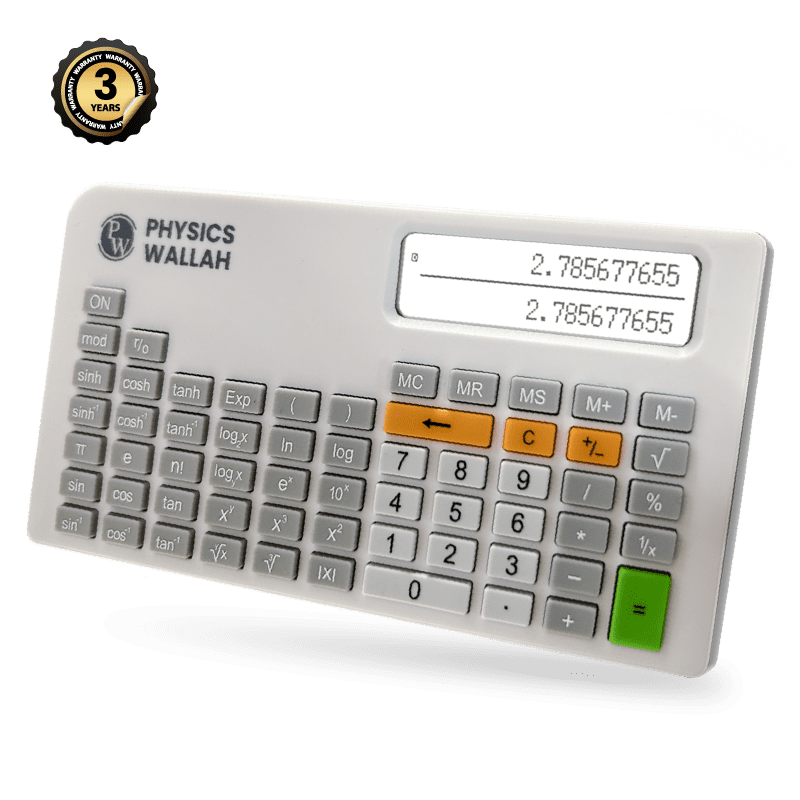How to Use a Scientific Calculator

What is a Scientific Calculator?
A scientific calculator is a type of calculator designed to solve complex mathematical and scientific problems. Unlike a basic calculator, which can only perform simple addition, subtraction, multiplication, and division, a scientific calculator includes advanced functions like exponents, square roots, logarithms, and trigonometry. These features are essential for subjects such as physics, chemistry, engineering, and higher-level mathematics.
When using a scientific calculator, you can calculate powers, find square roots, and solve equations that involve sine (sin), cosine (cos), and tangent (tan). It also allows you to work with scientific notation, which is useful for very large or very small numbers. Knowing how to use a scientific calculator correctly is important because different models may require different ways of entering calculations.
How Does a Calculator Work?
A calculator is an electronic device that performs mathematical operations based on the input given by the user. It uses a built-in processor to perform calculations quickly and accurately. When you press a button, the calculator follows a set of programmed instructions to process the numbers and display the correct result.
A scientific calculator works similarly but includes advanced features like exponents, logarithms, trigonometric functions, and scientific notation. These functions make it useful for solving complex problems in physics, chemistry, and engineering. A key aspect of using a scientific calculator is understanding how it processes calculations based on the order of operations (BODMAS/BIDMAS). This ensures multiplication and division are done before addition and subtraction.
How to Use a Scientific Calculator?
To correctly use a scientific calculator, it's perfect to read the user manual. If you don’t have one, you can search for your calculator model online. Different calculators have slightly different ways of entering numbers, so experimenting with simple calculations is useful.
-
Square Root: To find the square root of 4, check whether you enter 4 first and then press √, or press √ first and then enter 4.
-
Powers and Exponents: If your calculator has an xʸ or yˣ button, test it by entering 2, power key, 3. If the result is 8, the calculator correctly calculates 2³. If you get 9, it is using 3² instead.
-
Scientific Notation (10ˣ): Test whether you enter 10ˣ first or the exponent first, as this is crucial for science problems.
-
Trigonometric Functions: If you calculate sin(30°) and do not get 0.5, check whether your calculator is in radian mode instead of degree mode. Look for a MODE key to switch.
Check Out: PW Stationery
Function of Scientific Calculator
Check out the Function of Scientific Calculator below:-
|
Function |
Description |
|
Basic Arithmetic |
Performs addition (+), subtraction (−), multiplication (×), and division (÷). |
|
Order of Operations |
Follows BODMAS/BIDMAS to execute calculations correctly. |
|
Exponents & Roots |
Includes square (x²), cube (x³), square root (√x), and cube root (∛x) functions. |
|
Trigonometric Functions |
Calculates sin, cos, tan and their inverses (sin⁻¹, cos⁻¹, tan⁻¹) in degrees or radians. |
|
Logarithmic & Exponential |
Computes logarithms (log, ln) and exponentials (e^x, 10^x). |
|
Fraction & Decimal Conversion |
Converts fractions to decimals and vice versa. |
|
Scientific Notation |
Expresses very large or small numbers using powers of 10 (10ˣ button). |
|
Permutations & Combinations |
Calculates arrangements (nPr) and selections (nCr) in probability problems. |
|
Factorial (n!) |
Computes factorial values for statistical and probability applications. |
|
Memory Functions |
Stores and recalls values using M+, M-, MR, MC for multi-step calculations. |
Also Check, Gadgets & Electronic Accessories
Scientific Calculator
Go through these Scientific Calculators by PW:-
Why Choose PW Scientific Calculator?
PW Scientific Calculator is specially designed for students preparing for competitive exams like GATE, IIT-JAM, BARC, RRB JE, and CAT. Its format aligns with the Official Virtual Scientific Calculator used in these exams, ensuring a seamless experience during tests.
-
High-Resolution Dual-Line Dot-Matrix LCD
Displays complex mathematical functions in a natural and intuitive format, making calculations easier to follow. -
Advanced Mathematical Functions
Supports Algebraic, Logarithmic/Exponential, Trigonometric, and Hyperbolic functions, making it ideal for engineering and technical studies. -
Dedicated Function Keys
Includes specialised keys for Modulo, Degree-to-Radian conversion, and Factorial, ensuring precise and quick calculations. -
Compact & Portable Design
With its sleek grey body, this lightweight and durable calculator is easy to carry, and perfect for students on the go. -
Perfect for Engineering & Competitive Exams
Designed to handle complex equations effortlessly, the PW Scientific Calculator is a must-have tool for students aiming for success in engineering and entrance exams.Read More: Stationery Gadgets Every Student Needs for Smarter Study
PW Scientific Calculator FAQs
-
What makes the PW Scientific Calculator different from other calculators?
The PW Scientific Calculator is designed specifically for competitive exams like GATE, IIT-JAM, BARC, RRB JE, and CAT. It follows the format of the Official Virtual Scientific Calculator used in these exams. -
Does this calculator support advanced mathematical functions?
Yes, it supports Algebraic, Logarithmic/Exponential, Trigonometric, and Hyperbolic functions, making it ideal for engineering and technical studies. -
Can I use the PW Scientific Calculator in my competitive exams?
Yes, it is designed to match the format of virtual calculators used in competitive exams, ensuring a smooth experience during tests. -
What display does this calculator have?
It features a Dual-Line Dot-Matrix LCD, which ensures clear and accurate display of complex mathematical expressions. -
Does it include special function keys?
Yes, it has dedicated keys for Modulo, Degree-to-Radian conversion, and Factorial, making calculations more efficient.











